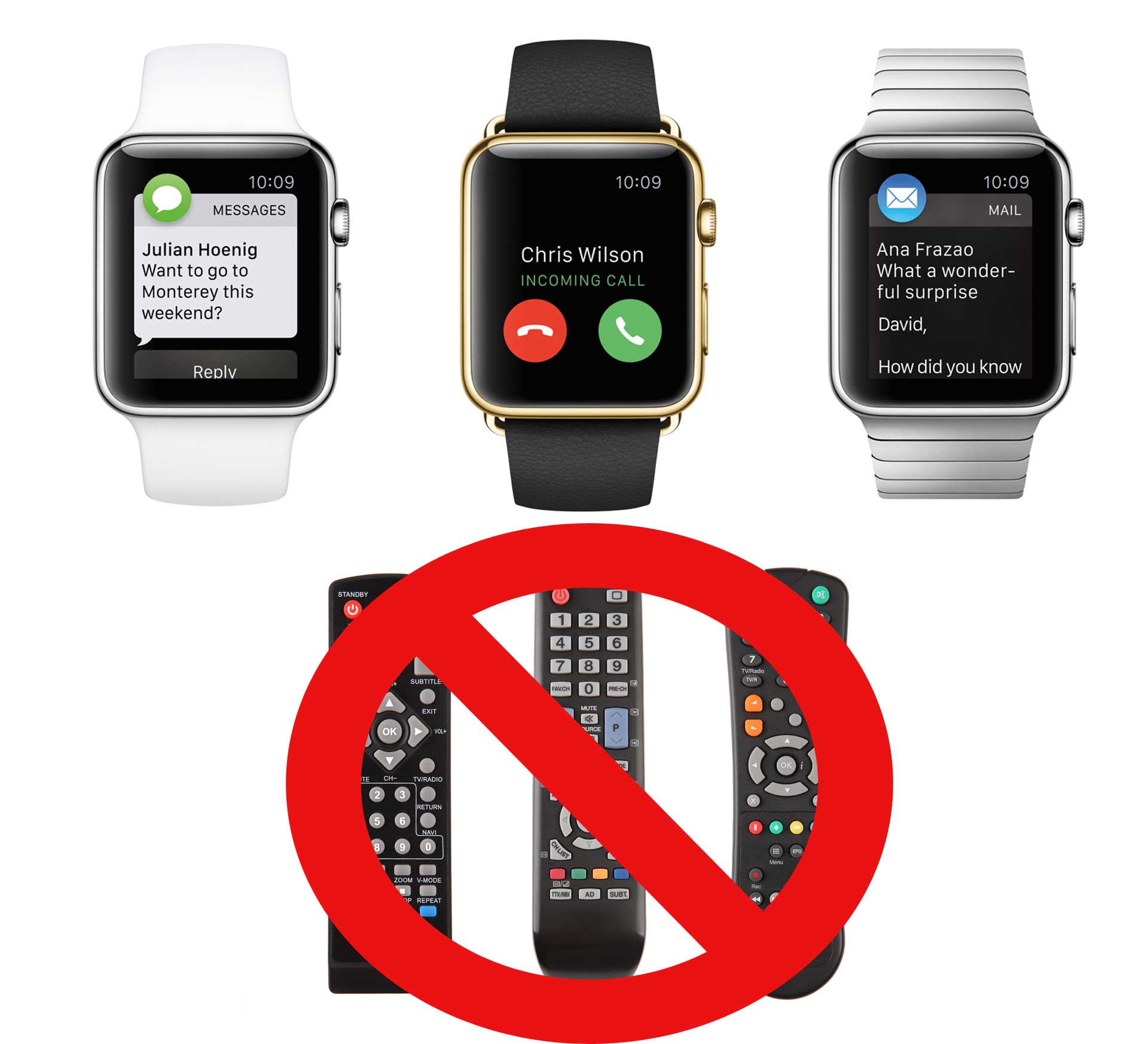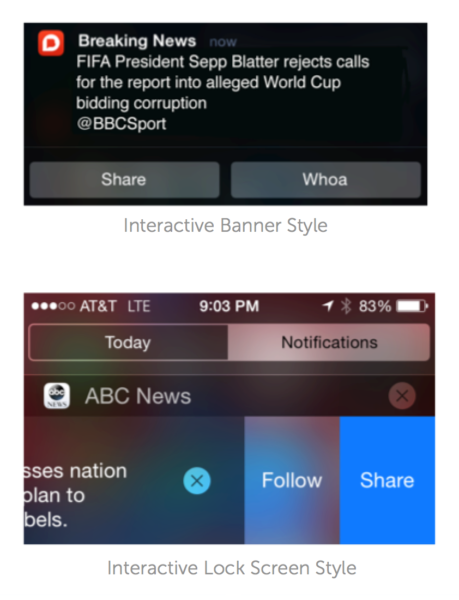Why The Apple Watch Is The New Remote Control For Everything
Like the remote, wearables will make consumers' lives easier. Combined with notifications, says contributor Brent Hieggelke, they'll help people connect with brands.
You might not believe it, but not everything that can be said about the Apple Watch has been said.
Something really important has been left out: interactive notifications. Together, the two will revolutionize how we interact with mobile devices, including our interactions with the brands we care about and beyond.
Some background. Until iOS 8, push notifications were simple: You got one, you swiped, and went into an app.
But now that they have buttons, users can do everything from purchase a product to share a news story. Interactive notifications have taken a technology we know and love and have evolved it to enhance our experience and connected life.
Rewiring History
To understand why this has such deep consequences, we need to look at another disruptive technology: the remote control. Remotes have actually been around much longer than most people believe. The first remote-controlled boat, for example, belonged to Nikola Tesla and made its maiden voyage before 1900.
The first remote control for the TV, called the Lazy Bones, appeared not long after manufacturers began making televisions for a mass market. It was connected to the TV by a wire. But surprisingly, no one liked them.
Part of the issue was technological — people kept tripping over the wire — but even when that problem was solved, the real issue was functionality. Early remotes could only change channels up or down. Advancing capabilities helped unleash a revolution in the TV economy.
Unfettered by a traditional dial, the cable industry exploded with thousands of specialty channels easily reached by hitting a few buttons. Without the remote, the DVR and streaming Internet would be unthinkable.
Why is this relevant to smartphones — and wearables in particular? Because interactive notifications are to mobile apps what remotes are to TV channels.
A New Era For Notifications
Prior to iOS 8 we could only view notifications as messages. They could be intelligent, contextual and targeted — or simply annoying.
But now they can give users much more control over their phones and apps, enabling a new level of development that extends actions and effortless experiences to device home screens and smartwatch faces. How exactly does this change things?
• Faster access. Before remotes became precise tools for selecting channels, nobody wanted them. Similarly, it could be a challenge to find apps or even remember which ones you have. Now we can glance at a watch and tap buttons that immediately interact with the relevant part of an app.
• An explosion in apps. Right now, most of us have a natural limit for the number of apps we have. With interactive push notifications, we can have as many as we like and set them to serve at-a-glance content and functionality to us.
That way they will deliver more value in less time. The brands we have a relationship with will need to tap into a value-based utility to gain access to this remote control, or be relegated to living just on the smartphone, which will be costly isolation.
• New experiences. While many question the utility of the Apple Watch, they are often thinking of what they can do with it today. But apps on your phone today aren’t designed to work with a wearable. Developers are already working on a new generation of apps that will incorporate interactive notifications as an instrumental part of the smartwatch user experience.
• Extending user controls. One of the limitations (not to mention irritations) of early push notifications was that they were hard to customize. Either you received too many or not enough.
Now developers can provide fast access to tools that can fine-tune which ones you receive and how often. Think of how easy it is to use a thumbs-down button to adjust your music preferences on Pandora and Slacker, and you get the idea.
• The Internet of Things. Interactive push notifications also have a big role to play in new technologies like health monitoring, smart vehicles, and automated homes.
Imagine that you use a remote to start your car on a cold morning, but then get distracted, delaying your departure. The car app merely needs to send you a quick actionable notification that gives you the option to shut off your car, or keep it running, and you can take action on the fly in a second or two.
It seems strange today that early on, people had little use for TV remotes. Many marketers felt the same way about push notifications.
But in a world where people look at their phones up to 200 times each day, with many of those mobile moments occurring as a quick glance, brands need to embrace new opportunities outside of traditional apps, using them to to streamline customers’ experiences and learn more about what they truly care about.
New Opportunities For Brands
Now that push notifications are interactive, they open up entirely new possibilities for connecting with devices and content.
Interested in a retailer’s sale but simply don’t have time to swipe through to view products and pricing? Just tap the Remind Me Later button. Kid in one hand and a grocery cart in another? Now a quick glance at your wrist can guide you through the store to get items on your shopping list. Big game about to start but you are recording it to view later? Tap the opt-out of game alerts button to avoid spoilers.
Gain additional inspiration on the new world of interactive notifications and the actionable glances they’ll provide to smartwatches with this look book my company has put together.
Like the remote control, wearables have set out to make users’ lives easier, but the best part about this new technology is that a wearable, unlike a remote control, will never develop a talent for hiding between couch cushions.
Opinions expressed in this article are those of the guest author and not necessarily MarTech. Staff authors are listed here.
Related stories

